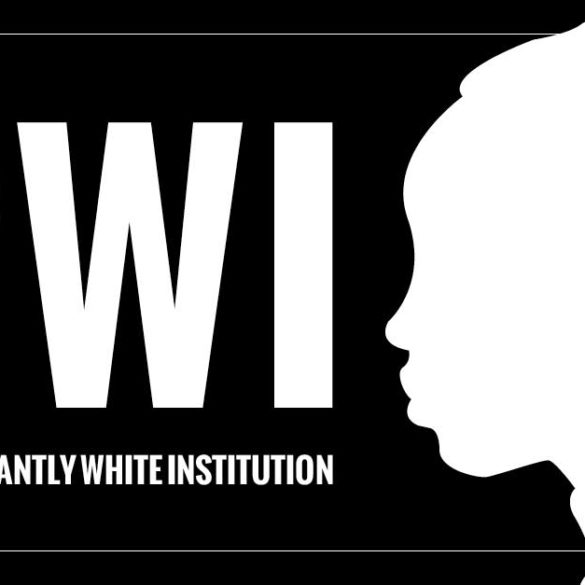Being a black student at a predominantly white university can be a hard pill to swallow at times. Sometimes, you feel as though your voice is not enough to be heard among the crowd. You feel like you are such a small percentage of the school that there is no possible way that you can make a change. It can be pretty intimidating being on a campus where the majority of your student body is white.
When I was an art major, I was mainly the only black/mixed race individual in there. It let me see that not many people of color were in the major, especially females. Going into my second year I ended up switching my major to journalism graphics. I was happy to see a few more people with the same racial background as me in the class, but it was still a very small percentage, especially at the Daily News. I feel like being in the Daily News gives me a sort of platform to bring more black culture and events to the forefront for other students to see.
According to colleges.startclass.com, the school average for black or African American students at Ball State is 6.1 percent while at Indiana University it is 4.0 percent. The study suggest that Ball State has a larger population of black or African American students than IU, but not by very much.
Being a black student at a PWI (predominantly white institute) can create a close knit community within the black minority group on campus. That alone gives us a chance for our voice to be heard, such as with the Michael Brown march last year, and also the movement with wearing all black to show our support for Mizzou.
You begin to know more people when speaking about the cause we all try and stand for. Personally, I feel we all need to support each other and lift each other up. The Michael Brown march hosted on Ball State’s campus was uplifting and just amazing to see a large majority of the black community and other minorities coming together for the cause, especially #BlackLivesMatter. We all know that #AllLivesMatter but that isn’t the issue that the black community is trying to bring to light. We focus on the black lives because they always seem to be put on the back burner, along with other minority groups (Hispanic, Muslim, etc.).
Being on a predominantly white campus also allows us to help educate the white population that is here, and to keep them informed about issues that still effect blacks and minorities of the general public. Many of them would like to think that Ball State is a diverse campus and it is in a way, but it is also a campus that is not very integrated. Groups such as BSA try to bring others from outside of the black minority group with many open discussions that they host. I know it can be a little intimidating and it’s the same way with most black students attending white events as well. But if we are never able to talk about the issues there is little hope that they will actually be fixed or brought to light.




